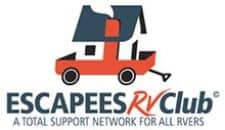In the excitement of considering life as an [an error occurred while processing this directive]er, it may not occur to some that the new lifestyle demands several non-recreational roles to be assumed. One of these roles is the handyman (ladies included). I point this out not to throw cold water on the exciting plans, but to prepare you for a certainty that comes standard with living in an RV, no matter how new the unit.
If fixing things around the house is your thing, then fixing things in an RV will come easy for you. On the other hand, if you rely on someone else when the simplest thing goes wrong, prepare yourself to become handy or take a handyman along on your RV adventure.
Think that you can dismiss this role by throwing money at it? Not so fast! Even if your budget can sustain paying for all preventive maintenance and repairs, services may not always be available. Imagine the difference it would make if you can do your own RV repair, versus having to spend a day or two of your week-long vacation at the shop.
RV Repairs vs. House Repairs
Even though an RV is considerably smaller than a modest house, it requires more frequent repairs. This is also true for brand new [an error occurred while processing this directive]s, while new houses are mostly trouble-free in their first few years.
Some of the reasons for the increased repairs in an RV are the following:
- Lighter construction throughout, due to weight and space constraints. Even the appliances are not made as well as the ones manufactured for fixed residences.
- RV’s have more moving parts, some of them complex.
- Vibration, bumping, and frame flexing caused by travel can break or loosen all sorts of components.
- Less insulation means preventive measures must be taken in freezing weather. If preventive measures are ignored, repairs may be necessary.
- Unlike houses that are frequently inspected during construction, RV’s have no such regulatory requirements. This leaves quality control up to each manufacturer, some of which choose to build poor quality products. This is why it is so important to inspect all RV’s before buying.
What Does it Take to be a Handyman?
From my own experience and from observing others on both sides of the handyman fence, I have come to the conclusion that the two requirements to become handy are: interest in solving a problem and not being intimidated by machinery. A close third is knowing your limits; knowing when a problem is beyond your skills and being willing to ask for professional help. Once you posses the above three attributes, the finer skills of being a handyman can be learned with time and practice.
As you are gaining experience, keep this old saying in mind: “Measure twice and cut once.” The key is not to be so afraid that you won’t try, but to be extra cautious when approaching an unfamiliar problem. Are you about to drill through a wall? Do all you can to examine both sides of the wall and items near it. If there is a chance that utilities may be running through that wall, do not proceed without consulting blue prints or an expert.
Maintenance & Repair Tasks
Handyman skills are necessary for RV preventive maintenance and for making repairs. Below is a list of common tasks that a person possessing a good dose of common sense and average skills should be able to handle without specialized training:
Motor home engine or tow vehicle components:
- Check and fill engine oil
- Check and fill engine coolant
- Check and fill other engine fluids
- Check and adjust tire pressure
- Lubricate under-chassis steering joints
- Lubricate hitch moving components
Recreational vehicle components:
- Repair or install cabinetry hinges, slides, and latches
- Re-attach paneling with nails or adhesive
- Fix external storage door hinges and support arms
- Replace broken entryway handles
- Dislodge and lubricate stubborn [an error occurred while processing this directive] mechanisms
- Replace bulbs
- Find and replace blown fuses
- Troubleshoot basic electrical problems with a multimeter
- Test RV park A/C power voltage
- Check and fill RV battery water
- Test RV battery charge level
- Replace common electric motors such as water pump and waste water valve motors
- Drill holes in various locations to run wires, but having enough sense to know where not to drill in order to avoid damaging components beneath the surface.
- Find source of water leak and caulk it
- Repair leaky water lines and hoses that are easily accessible
- Unclog slow or blocked sink and shower drains
- Insulate exposed hoses and pipes to prevent freezing
- Winterize RV before cold storage to prevent freezing
- Repair broken sewage connectors and covers
- Detect and find propane leaks
- Clear clogged air conditioner drain passages
- Recognize and correct common refrigerator problems. For example, my mostly-new Norcold fridge occasionally stops cooling until I reset the control board by unplugging the 12 volt DC wire in the back. According to a service guy, this is common for this brand.
Handyman Essentials
Take it from me and the Boy Scouts—it is good to be prepared. I remember racing across Dallas a few minutes before 11:00 P.M., trying to make it to an AutoZone to buy fuses before they closed. The [an error occurred while processing this directive] in our brand new RV blew a fuse, the batteries were mostly drained, and without spare fuses our new home just sat there in the dark. This incident would have turned into an uncomfortable night were it to happen during a vacation, far away from auto part stores.
To be prepared, take along a complete set of common tools such as hammers, screw drivers, etc. In addition, take all of the following tools, supplies, and spares that apply to your situation:
Tools:
- Hydraulic jacks rated for the RV weight
- Sturdy blocks for using under hydraulic jacks. Check your jacks before you need them because they may not extend high enough to lift the RV without the use of blocks. Concrete or other masonry blocks may not be strong enough to support the weight of heavy RV’s and tow trucks.
- Torque wrench for tightening the wheel lug nuts
- ¼” and ½” socket drivers with extensions and sockets to fit all fasteners you might remove. The largest socket I needed was a 2″ for the wheel lug nuts to use with the torque wrench.
- 15″ adjustable wrench with a 2.5″ jaw opening
- Caulk gun
- Grease gun or can of grease. I found storing the grease gun too messy and opted for the can instead.
- Full set of Allen wrenches
- Full set of screwdriver tips, including square and star shapes
- Small wood and metal hand saws
- Flexible magnet to retrieve fallen screws
- Small mirror to look into tight spaces
- Small shovel in case you get stuck in snow or mud, like we did in Indiana
- Small wood and metal files for rounding sharp corners
- Multimeter with a set of alligator clip wires
- Battery hydrometer for accurately testing battery charge
- Soldering iron and solder for re-attaching broken wires
- Flash light with fresh batteries
- Electric drill and complete drill bit set
- Quality tire pressure gauge with long hose, rated for 100 psi or higher
- Adjustable gripping pliers with jaws wide enough to clamp onto water hose connector. Handy when it is time to remove an over-tightened water hose.
Spares:
- At least a couple of each fuse size found in your RV and tow vehicle. More of the common sizes.
- Light bulbs
- Fresh water hose and adapter to connect two hoses for longer reach
- Sewer hose and adapter to connect two hoses for longer reach
- Sewer pipe screw-on cap because it breaks easily in cold weather
- Spare wheel for motor home, trailer, and tow vehicle
- Tire valve cores and removal tool
- Electrical extension cords designed for outdoor use
Maintenance & repair supplies:
- Collection of screws and nails, the types used in your RV
- Duct tape, both the permanent and temporary types. Temporary duct tape comes in handy to hold things like paneling and trim in place while the adhesive dries.
- Clear duct tape for temporary repair of broken signal lights, torn awning canvas, etc.
- Liquid Nails adhesive for re-attaching sagging ceilings and almost anything else
- Marine adhesive for waterproof repairs
- Caulk designed for the roof and exterior walls of your specific RV
- General use waterproof caulk for the interior
- WD-40 for lubrication and for removing tough petroleum-based stains
- Propane leak tester solution in spray bottle
- Wire nuts for connecting electrical wires
- Pipe insulation
Know Your Limits
Being handy around the RV will save you time, money, and the added aggravation of spending part of your vacation in a shop. At the same time be smart about what you are capable and willing to take on. One time I removed and completely disassembled a wheel hub from my trailer to track down a squeaky noise; this has taught me that wheel hubs are too complex for my skills and messy too.
It is never fun when something goes wrong with the RV, but you will get a great deal of satisfaction being able to repair common problems
Original founder and writer for Changin' Gears. Former full-time RVer!
-
Charlie Kerekeshttps://changingears.com/author/charlie-kerekes/
-
Charlie Kerekeshttps://changingears.com/author/charlie-kerekes/
-
Charlie Kerekeshttps://changingears.com/author/charlie-kerekes/
-
Charlie Kerekeshttps://changingears.com/author/charlie-kerekes/









